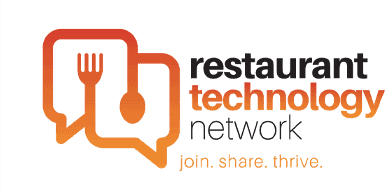Thanks to COVID-19, restaurants have had to make a significant adjustment in the way they market themselves to the public.
Related read: COVID-19 Regulations by State (Updated Daily)
Traditionally, customers were most interested in the quality of your service and food, along with your location, hours, menus, etc.
In these virus-wary times, though, the focus has understandably shifted to a large extent to matters of health and safety. It’s not enough just to serve delicious food with a smile—you’ve got to take proactive, visible action to promote safety and sanitation.
Here are five of the top health and safety issues that your potential customers are concerned about as they decide where to spend their dining dollars.
Social distancing
One of the easiest and most important measures to institute in response to the COVID-19 threat is the establishment and maintenance of appropriate social distancing.
We’re all familiar with social distancing by now, but just because we’ve come to expect such measures to be in place doesn’t mean we’re willing to take them for granted. Here are some general social distancing procedures that people are going to want to know you’ve implemented before they decide to walk through your doors.
- Updated floor plans to ensure at least six feet of separation between table setups.
- Design a process so guests stay separated while waiting for seating. This process can include floor markings, outdoor distancing, waiting in cars, etc.
- Limit party size at tables to no more than the established “maximums approved” as recommended by the CDC or by local and state governments.
- Install physical barriers where practical, especially in booth seating sections.
- Consider a reservations-only or call-ahead-seating business model to more effectively space diners.
- Remind third-party delivery drivers and any suppliers that you have internal distancing requirements.
- Install physical barriers such as partitions or plexiglass at registers.
- Determine ingress/egress to and from restrooms to establish paths that mitigate proximity for guests and staff.
- Consider an exit from the facility separate from the entrance.
Food safety
All the old rules and precautions of the FDA’s “food code” still apply, and new guidelines reiterate things like discarding out-of-date food items, the implementation of sneeze guards, etc.
Additional food safety procedures emphasized by the new, COVID-influenced guidelines include
- Establishing strong procedures and practices to clean and sanitize surfaces
- Ensuring the person in charge of the facility is a certified food safety manager
- Ensuring the food safety manager is on-site at all times during operating hours
- Stocking coolers to no more than minimum levels if providing “grab-and-go” service.
Employee health and hygiene
One of the most effective ways to prevent the spread of the virus to staff and customers, of course, is to eliminate interaction between those who are (or may be) infected from those who aren’t.
CDC guidelines mandate pre-work screening for all employees. Your guests are going to want to know that employees who become ill or present signs of illness will be immediately sent home.
Guests will also want to know that you’re following CDC guidelines as to when ill employees may return to work. At a minimum, the employee should self-isolate for seven days from the onset of symptoms, and be symptom-free for three days without medication.
Facility cleaning and sanitizing
In regards to the cleaning and sanitation of the facility in general, the guidelines make a variety of specific recommendations that guests are going to want to know you’re following, including:
- Cleaning and sanitizing table condiments, digital-ordering devices, self-service areas, tabletops, and common-touch areas between seatings.
- Discarding all single-use items.
- Cleaning and sanitizing reusable menus. If you use paper menus, discard them after each customer use.
- Implementing procedures to increase how often you clean and sanitize surfaces in the back-of-house.
- Checking restrooms regularly, and cleaning and sanitizing them based on the frequency of use.
- Making hand sanitizer readily available to guests.
Contactless service
Perhaps the most significant adjustment made by the vast majority of eateries in response to the virus is the institution of various degrees of contactless service measures. Whatever other measures are in place, nothing reassures guests quite so much as the ability to order and pay for their favorite dishes with as little contact as possible.
Solutions like those offered by OneDine are ready-made for a world in which contactless dining is the new normal.
Guests can experience safe, contact-free payment with a variety of options. For curbside, drive-up, and take-out these options include SMS messages with a link to an online payment portal, a QR code that can be scanned in order to pay, or ordering online via custom mobile browsing/ordering website with payment at checkout (or upon arrival via SMS or QR code).
Related read: Contactless Payment Equals Greater Consumer Spending, Now and Post-COVID
For payments inside the dining room, diners can tap a table sensor in order to pay the check, or scan a unique QR code that is printed on the receipt.
It goes without saying that strict health and safety measures are more important than ever in the restaurant industry. What may be less obvious is that it’s also important to let guests know about the measures you’ve implemented.





